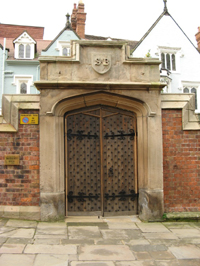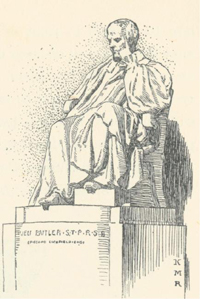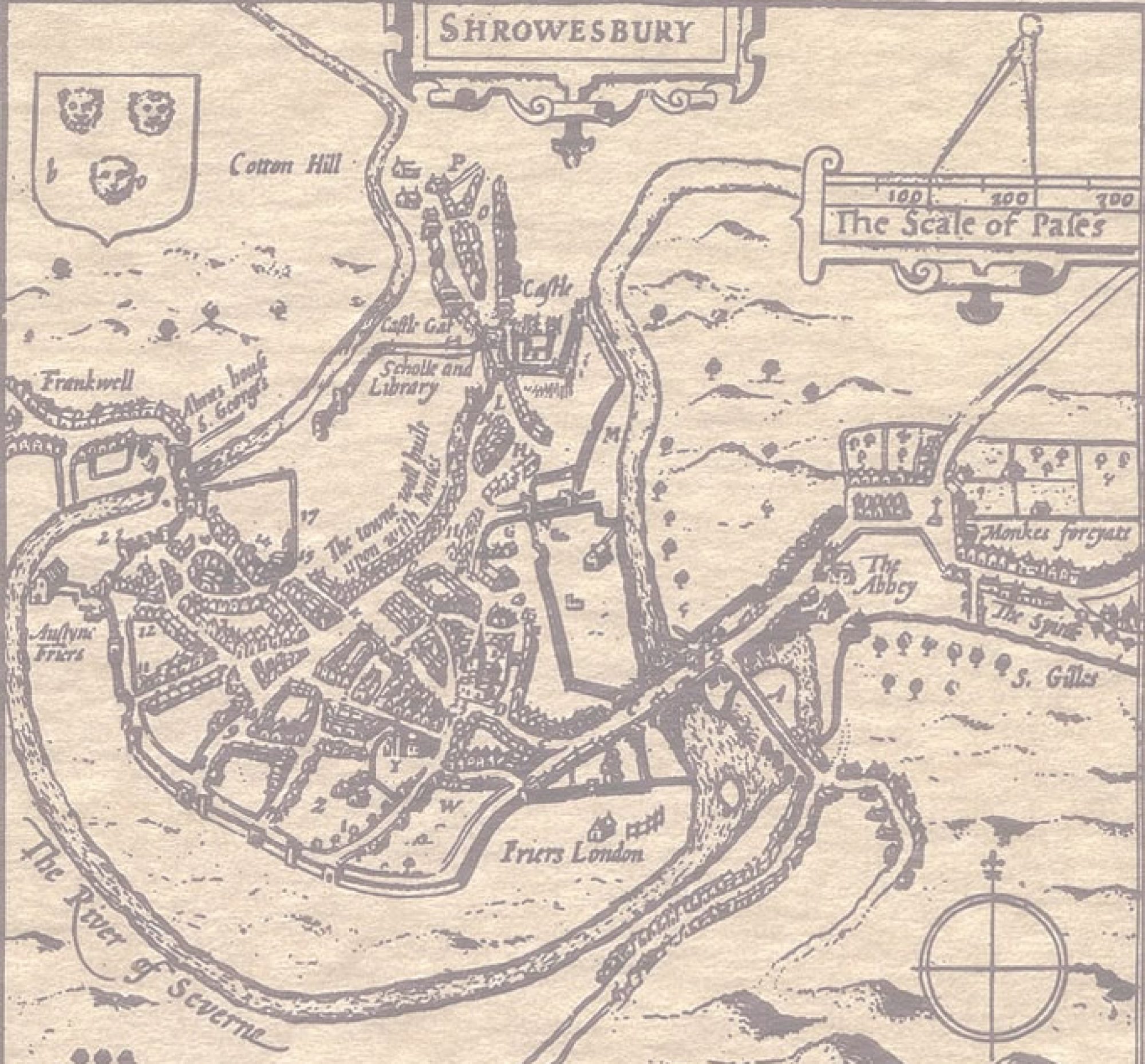
Butler Road continues the theme of famous headmasters of Shrewsbury School commemorated by street names in Kingsland, Shrewsbury. Dr Samuel Butler (1774-1839), was headmaster from 1798 to 1835, and when he was appointed at the tender age of 24 the school was at a very low ebb, there being only about twenty boys on its books. But by the time Butler resigned in 1836 he had transformed the school into one of the foremost in England, with an enviable reputation in the classics. [footnote 1] Butler faced many battles in his effort to turn round the fortunes of the school. These included establishing discipline among the boys in the turbulent years of the early nineteenth century, winning over the inhabitants of Shrewsbury to his methods, and even facing opposition from members of staff. But by the time the nine-year-old Charles Darwin arrived at the school in 1818, its reputation for classical scholarship was already established, and the numbers of pupils, particularly boarders, was growing rapidly.
To accommodate these pupils Butler gradually bought up the nearby houses as dormitories, adorning the gate of the house next door with his initials, which remain to this day. Conditions in these houses were very primitive, with damp beds (which might have to be shared), minimal washing facilities and poor food. The living conditions may have been primitive, but Butler’s teaching methods were very advanced. He instituted half-yearly exams, unknown outside universities, upon which depended the pupil’s position in class. Each pupil also had a monthly academic review, and Butler held regular conferences with the other masters to check on the boys’ progress. Such methods resulted in spectacular success for former pupils at the universities, which brought the school to the attention of more prestigious establishments, such as Eton and Harrow. The headmaster of Harrow came down to Shrewsbury to see for himself, and even sat in on some of Butler’s lessons. But as well as using new teaching methods, Butler was able to inspire his pupils, in the way that only a great teacher can. One of these former pupils wrote many years later that Butler made many of the boys ‘believe that Latin and Greek were the only things worth living for.’ [footnote 2]

Butler resigned as headmaster of the School in 1836 (apparently with some reluctance) to become the Bishop of Lichfield. His tenure as Bishop was brief and dogged by illness, and he died on December 4th 1839. The funeral eight days later was marked by sombre crowds dressed in black lining the streets, some of whom shed ‘tears of reverence and affection’, remembering that ‘he lived without ostentation [and] his affectionate disposition.’ Another enormous throng crowded every nook and cranny of St Mary’s Church for the service. [footnote 3] Among many obituaries was one in the influential Quarterly Review, which praised Butler’s work ‘in remodelling our public education…which is now acting on almost all the public schools in the country.’ [footnote 4]
Soon after his death it was decided to erect a statue in St Mary’s Church in his honour. [footnote 5] It did not take long to collect the £800 needed, and the sculpture was done by EH Baily (1788-1867) (whose best-known work was the Nelson of Nelson’s column), and the statue was unveiled in October 1844. [footnote 6] In the twentieth century Butler was moved to the Moser Library at Shrewsbury School, by then on its present Kingsland site. There he remained until sometime in the 1960s, when his peace was rudely disturbed when the School authorities decided that his presence was an embarrassment, and he was unceremoniously broken up, and the pieces used for hardcore. [footnote 7] The event was even recorded in a Latin satirical verse!

So why would a statue by a good Victorian sculptor which celebrated the life of one of the School’s most influential figures be so summarily destroyed? Perhaps part of the answer may lie in the influence of Charles Darwin, who wrote, ‘Nothing could have been worse for the development of my mind than Dr Butler’s school, as it was strictly classical, nothing else being taught except a little geography and history. The school as a means of education to me was simply a blank.’ [footnote 8] Maybe by the 1960s opinions like these had become an embarrassment to those trying to sell the modern Shrewsbury School. Perhaps they never realised the debt that the School, and indeed education in England, owes to Dr Samuel Butler.
Footnotes
[1] George W Fisher,Annals of Shrewsbury School, Methuen, 1899, pp. 262-324; J Basil Oldham, A History of Shrewsbury School, 1552-1952, Basil Blackwell, Oxford, 1952, pp. 72-103; Andrew Pattison, The Darwins of Shrewsbury, History Press, 2009, pp. 46-52
[2] Rev WG Humphry, quoted in Fisher, p.305
[3] SC, 13.12.1839
[4] Quarterly Review, September 1842, quoted by Fisher, p.306
[5] Samuel Butler (Ed) Life and Letters of Samuel Butler, Vol. II, John Murray, 1896, pp. 362-3
[6] SC, 25.10.1844 (Butler, op. cit., p.363, states it was autumn 1843, which is incorrect)
[7] Shrewsbury School, 1552-2002, Shrewsbury School, p.15
[8] Charles Darwin, Autobiography, Penguin Edition, 2002, p.10
